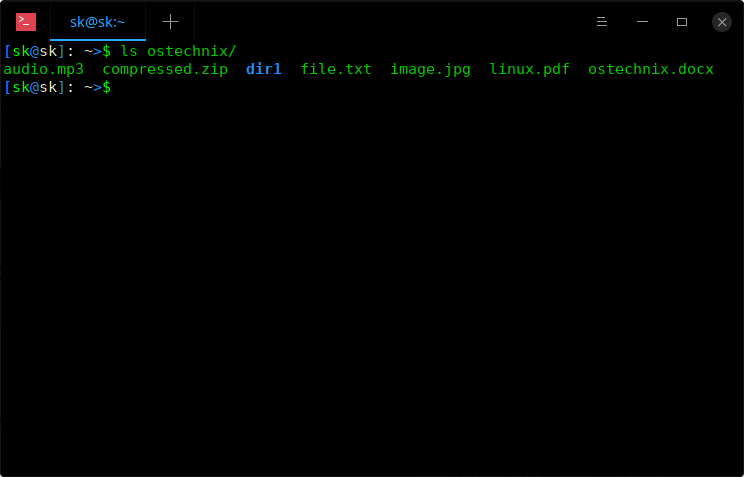

We are using brace substitution here to make the dot (. (revised to address most, but not all limitations outlined in the comments) eval ls -d $(echo $PATH | sed -e 's|^:|.:|' -e 's|:$|.:|' -e 's|:|/ is a quirk of bash 5.0.18 as it is expecting a comma separated list or range. To see what current folder or directory you’re in, simply type the following inside the Mac Terminal: pwd.
#Terminal list directory contents how to#
But basically, it means 'any file name ending in a forward slash. How to Display Current Directory Path in Mac Terminal.

Source: man ls / / is known as a 'glob' in UNIX. ls goes one layer down, into each subdirectory, and lists all the files in each of those sequentially. To explain this, consider what happens if we type ls /.
#Terminal list directory contents full#
To list the full path of all commands (apps/programs) accessible to the user. list directories themselves, not their contents. Then, you'd be able to do something like: xargs -0 rm -f - listOfFiles.list N: expands to nothing if there's no matching file ( nullglob).-N, output records are NUL-delimited instead of newline-delimited (lines) as NUL is the only character that can't be found in a file name.With the zsh shell, you could do instead: print -rNC1 $PWD/*(ND-.) > listOfFiles.list Also, since the newline character is as valid as any in a file path, if you separate the file paths with newline characters, you won't be able to use that resulting file to get back to the list of file reliably. Note that it doesn't include hidden files, includes files of any type (including directories) and if there's no non-hidden file in the directory, in POSIX/csh/rc shells, you'd get /current/wd/* as output. If you want to view the content in another directory, you can add the file path in the command: ls / add / file / path / here. ls just lists the content of the current directory that you are in. ls just prints that list here, so you could as well do: printf '%s\n' "$PWD"/* The colors used to display the names of files, directories and scripts depend on the visual theme used by the terminal. It's the shell that computes the list of (non-hidden) files in the directory and passes the list to ls. Note that in: ls -d "$PWD"/* > listOfFiles.list Launch the Terminal by pressing Ctrl+Alt+T and type: cat filename My test file looks like: To see what the column command actually does, type column followed by the filename: column filename By entering the above command, you will see that this command has converted the content of the file into columns.


 0 kommentar(er)
0 kommentar(er)
